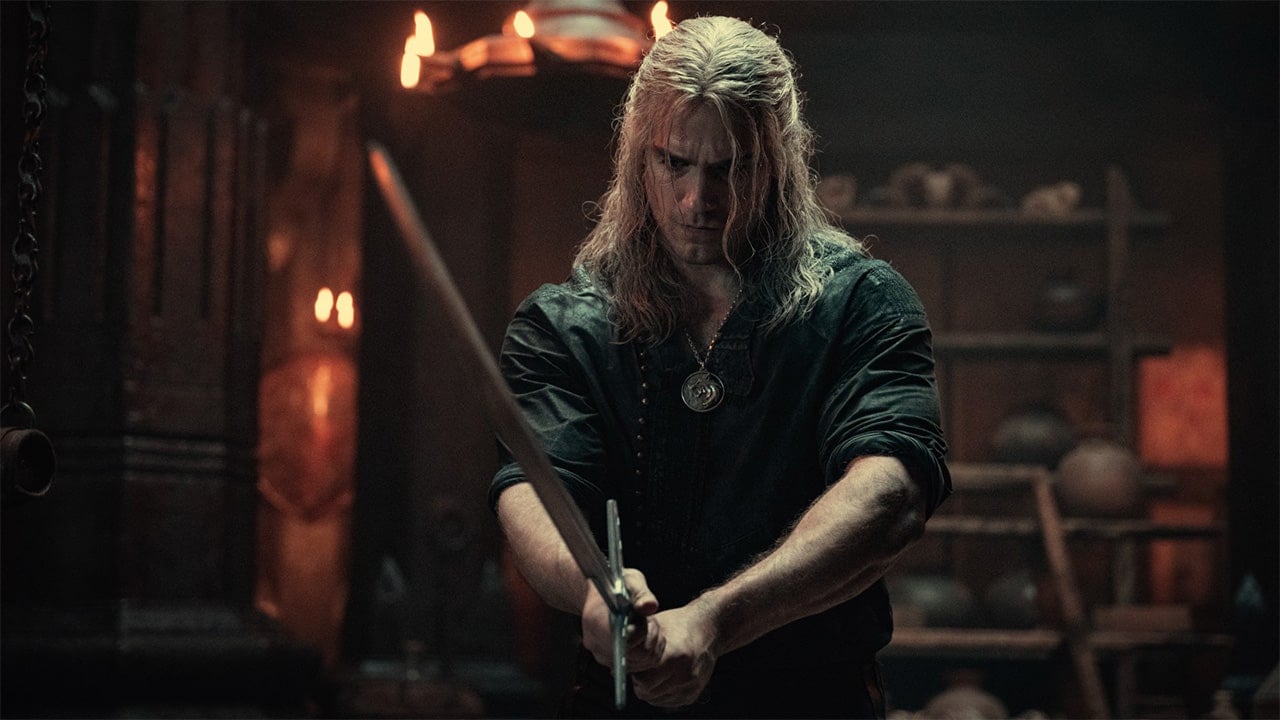I love a good fantasy story, and love it or hate it; there is no denying the success of The Witcher franchise. Spanning over eight books, three games, countless short stories, and two seasons, it doesn’t seem like The Witcher will be letting up anytime soon, and there is seemingly no end to the adventures Geralt of Rivia will take us along on.
My first introduction to the world of The Witcher was like many, through the games. I was hooked from the first cinematic that played in the first Witcher game, and since then, the spell just hasn’t broken. With the wildly popular Netflix show, I’ve found myself more invested than ever and want to know even more about The Witcher and Geralt’s fantastical world filled with dark snarky humour, monsters and bards.
This is where the comics come into play. The Witcher comics serve as a tie in between the books, short stories and the video game franchise, helping to fill in some of the gaps between them. If you are also wanting to dive into the comics, here is a little bit about them as well as their correct reading order:
The Witcher: House of Glass
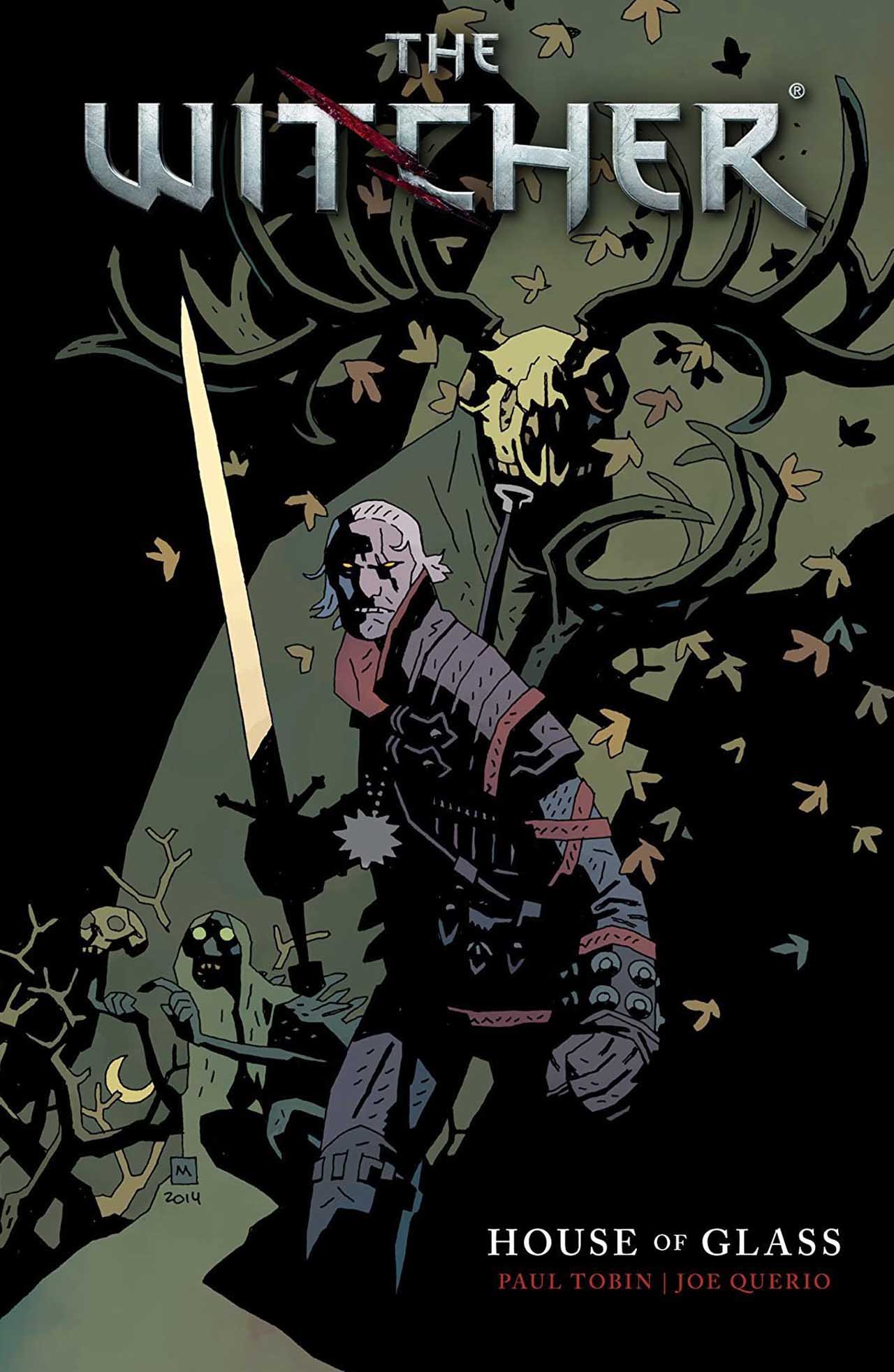
5 Issues written by Paul Tobin (Plants vs. Zombies; Angry Birds; Marvel Adventures Spider-Man) and with art by Joe Querio (B.P.R.D.: Hell On Earth; Lobster Johnson)
In The Witcher: House of Glass, we follow Geralt, who, thanks to random happenstance, has just met a man, Jakob, while travelling through the Black Forest. After the two men share some conversation and a few drinks, Jakob opens up to Geralt, telling him about his wife, who had died only to be taken by the Bruxae and turned into one of them. Jakob stays in the Black Forest to remain close to his wife even though he knows she is little more than undead now, and his wife resides in an eerie mansion known as the House of Glass.
Before long, Geralt and Jakob find themselves being lured into the mansion, and Geralt has to rely on all of his witcher skills if he and Jakob want to make it out alive. While The Witcher: House of Glass is essentially just a single sidequest in the life of Geralt, it is a great place to start if you’re picking up the comics for the first time. The comic almost perfectly captures the mystery and intrigue that the sidequests in the game often do and it lays the groundwork for many more exciting stories to come.
The Witcher: Fox Children

5 Issues written by Paul Tobin (Plants vs. Zombies; Angry Birds; Marvel Adventures Spider-Man) and with art by Joe Querio (B.P.R.D.: Hell On Earth; Lobster Johnson)
Chronologically, while The Witcher: House of Glass was a brand new story written specifically for the comic, The Witcher: Fox Children is based on Season of the Storms, the sixth Witcher novel written by Andrzej Sapkowski.
The Witcher: Fox Children mainly takes place on the ship known as Prophet Lebioda and follows Geralt as he attempts to track down a young elven girl stolen by a Vulpess. The Vulpess, dubbed Fox Mother by the ship’s crew, is a shape changer and steals elven children, transforming them into one of their own to perpetuate the species.
Geralt never wanted to go on this quest, but after he and his dwarven friend, Addario Bach, get tricked into it by a shipful of greedy traders, Geralt is forced to rely on all the skills that made him the witcher he is today as he finds himself falling victim to Fox Mothers illusions and questioning what is real and what is not.
The Witcher: Curse of Crows
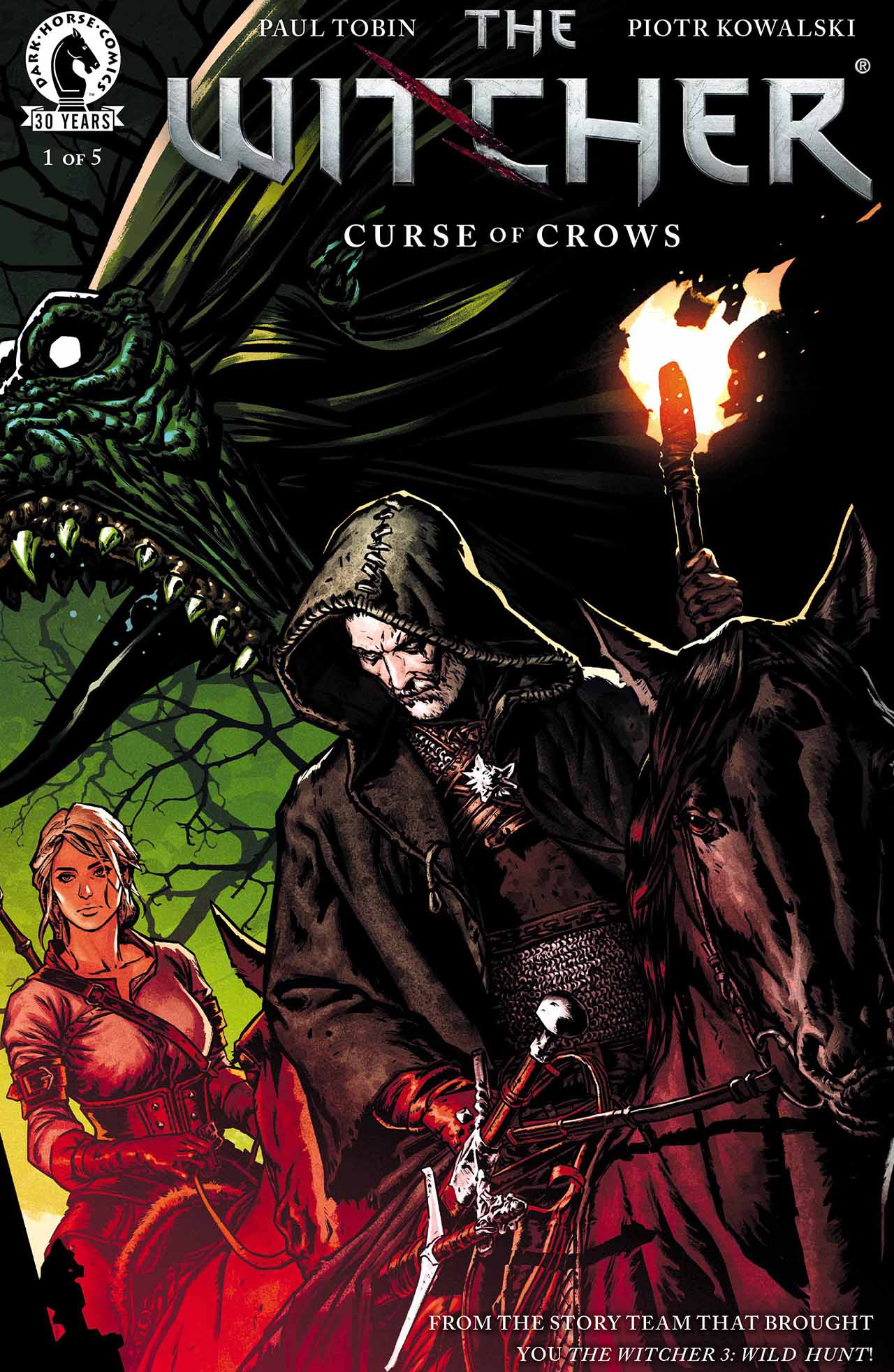
5 Issues written by Paul Tobin (Plants vs. Zombies; Angry Birds; Marvel Adventures Spider-Man), Borys Pugacz-Muraszkiewicz (CDPR), Karolina Stachyra (CDPR) and Travis Currit (CDPR) with art by Piotr Kowalski (Sex; Monster World; Bloodborne)
Chronologically, The Witcher: Curse of Crows follows directly from the end of The Witcher 3: Wild Hunt.
The Witcher: Curse of Crows starts with Geralt and Ciri, who have rescued a woman named Jayde from a troll known as Rockstride. Rather than fighting or killing the troll, Geralt instead stikes a bargain, and Rockstride lets Jayde go in exchange for some Vodka.
While escorting the now safe Jayde back to Novigrad, Geralt hears of a contact on a striga as well as one on a murderer called Forst Bolin, who also happens to be a doppler. Geralt soon realises that Jayde is the doppler and hands him over as they get to Novigrad.
That night while Geralt is bathing (yes to Geralt in a bathtub), he is paid a visit by Yennifer. Yennifer asks that he and Ciri please go about collecting ingredients she needs for a spell instead of fulfilling the striga contact; this ends up being a fools errand as Yennefer already had the ingredients she just didn’t want Ciri fighting a striga.
Obviously, Ciri finds out about this, and obviously, she decides to take on the striga alone.
The Witcher: Of Flesh and Flame
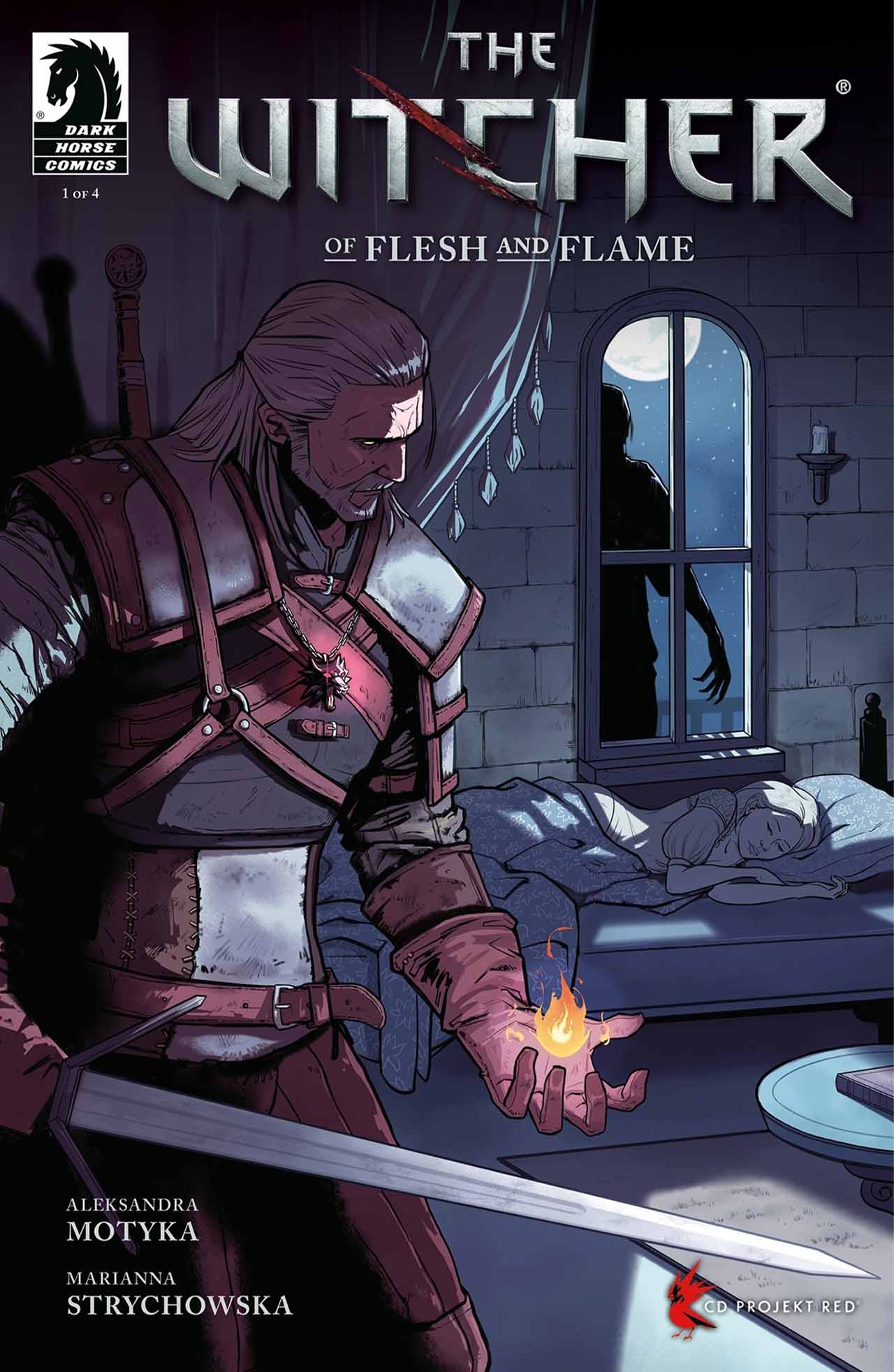
4 Issues written by Aleksandra Motyka (The Witcher) and with art by Marianna Strychowska (The Witcher)
Chronologically, The Witcher: Of Flesh and Flame takes place directly after the final issues of The Witcher: Curse of Crows.
The Witcher: Of Flesh and Flame sees Geralt avoiding Ofir at all costs as he is a wanted man there. However, when an old friend summons Geralt to the very place has was trying to avoid, the stakes become higher than anyone could have anticipated.
The contract seems simple enough: help an old friend solve a mystery surrounding his daughter, but when Geralt, while trying to hide his identity, ends up bumping into another old friend, Dandelion, they decide to team up once more. While Geralt is laser-focused on investigating what is going on with the king’s concubines and how this relates to the initial contact, Dandelion is trying to save Geralt from certain death.
The Witcher: Fading Memories
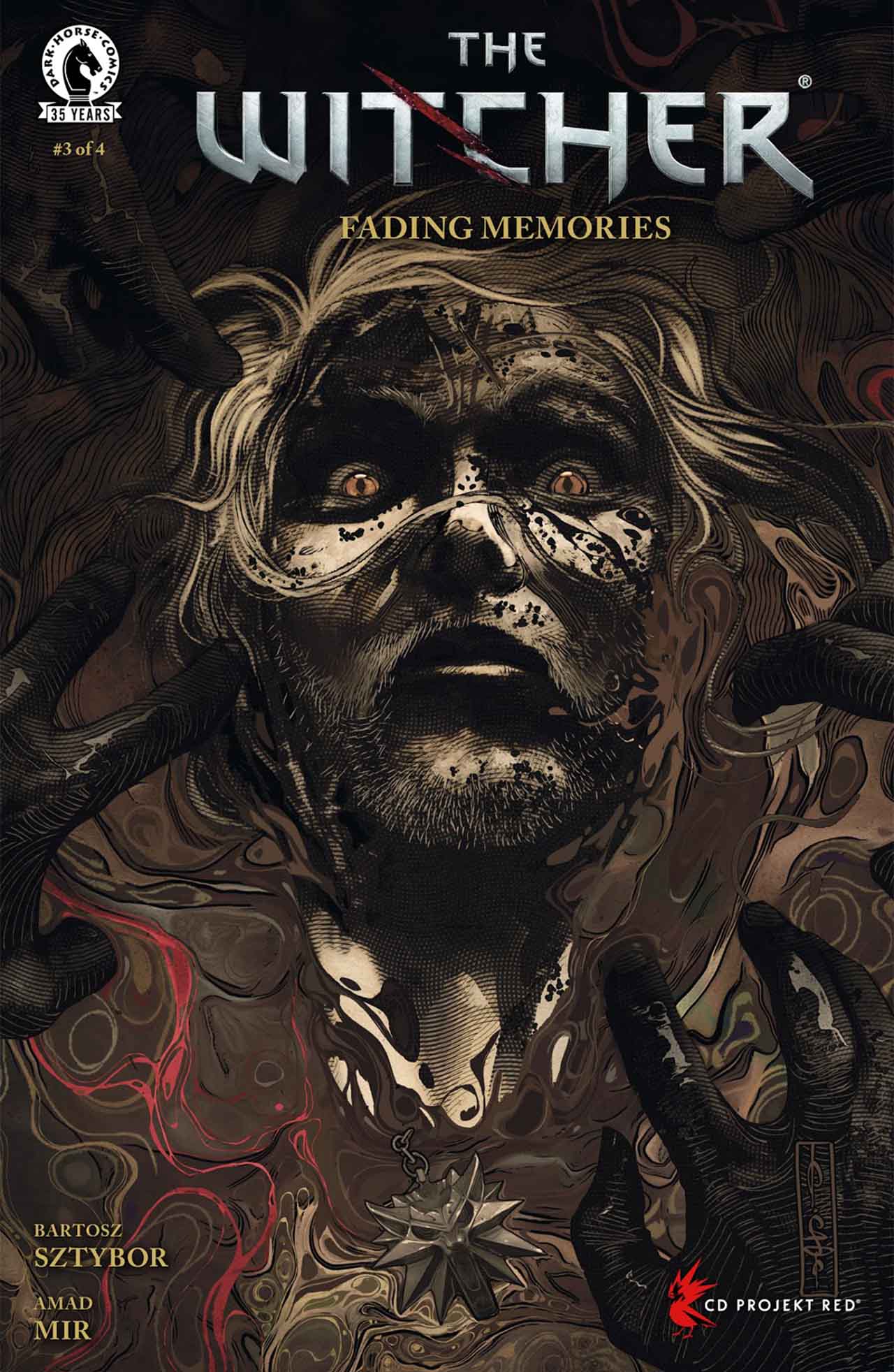
4 Issues written by Bartosz Sztybor (DoggyBags; Zombie Terrors; Jim Henson’s The Storyteller: Sirens) and with art by Amad Mir (The Witcher; Zarathustra)
Chronologically, The Witcher: Fading Memories takes place after the events of The Witcher 3: Blood and Wine game expansion.
It’s never been an easy life being a Witcher, but after most monster threats have seemingly vanished, the financial situation has become dire. What purpose does Geralt serve in the world when there are no monsters left to hunt?
Down at the local pub, we see Geralt cling onto the last shreds of his dignity when he turns down a fight-for-money with the local strong man only to be approached by a fisherman who needs help catching fish. While Geralt has never thought of himself as a fisherman, it is good honest work, and he needs the coin, so he accepts. Before long, Geralt realizes he is not the only one scrambling to try and find purpose again due to situations outside of his control.
Before long, Geralt is summoned to a nearby village who assures him all the monsters are not gone and who need his help dealing with a plague of ghoulish monsters. Still, Geralt can’t help but feel like something in this village is not right and that something has very little to do with the plague.
The Witcher: Witch’s Lament
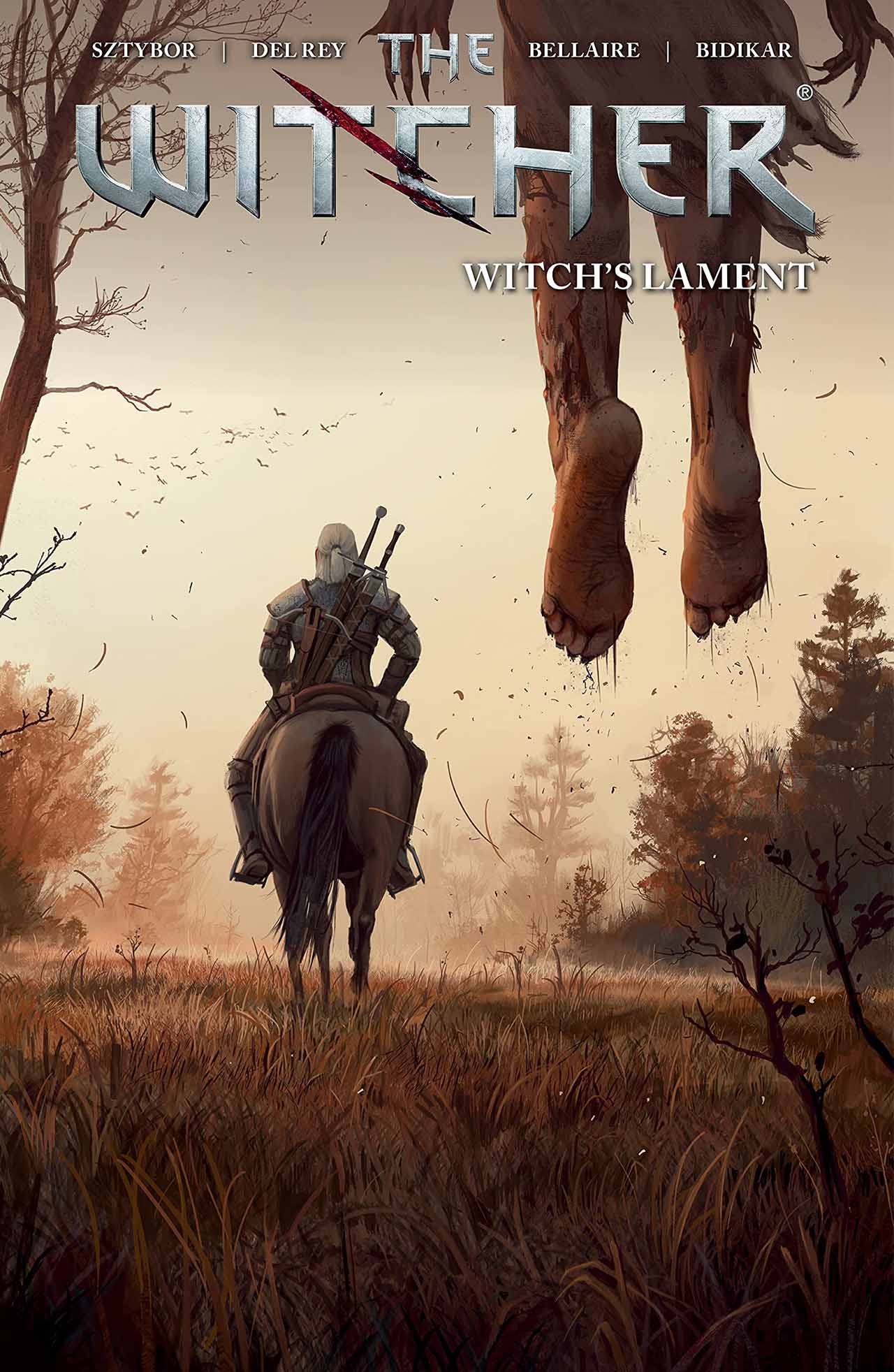
2 Issues written by Bartosz Sztybor (DoggyBags; Zombie Terrors; Jim Henson’s The Storyteller: Sirens) and with art by Vanesa Del Rey (Redlands; Ice Cream Man; Murder Falcon)
Chronologically, The Witcher: Witch’s Lament takes place a good long while before the events of The Witcher: Fading Memories and focuses on something we’ve never really seen before: Geralt’s guilt.
The story starts with what seems to be a routine hunt for Geralt, which ends with the captured witch being burned at the stake. This part of things goes off without a hitch, and Geralt leaves payment in hand, only something is wrong. Try as he might, Geralt can’t seem to get rid of the image of the woman burning at the stake. He also keeps hearing a mysterious voice making him question all his choices leading up to and including the burning.
Geralt can’t escape this voice in his head, and it even haunts his usually quiet dreams turning them into nightmares. Geralt soon sets off on a quest to find out what has possessed him. Instead, he discovers that what ails him is neither the work of ghosts nor witches but rather his own guilt.
Over the past few years, I’ve found myself really being drawn into and falling in love with the universe that The Witcher creates. Everything from the lore to the epic fantasy battles seems to reach into my soul and ignite it like I didn’t think possible, so whenever I have a chance to experience more of this world, I take it. And when it comes to the companion comics listed above, I was not disappointed and would recommend them to anyone who loves The Witcher and is looking for more.
If you enjoyed this list and it got you excited to dive into more of the story behind The Witcher, then remember to head over to Critters and Comics or click here. Because you can never have enough Witcher content, we also have a review of Nightmare of the Wolf, the anime prequel to The Witcher, and a review of The Witcher Season 2 that we think you’ll enjoy.

